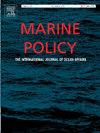昆士兰海滩无人机拍摄的鲨鱼运动高分辨率地图提高了海滩安全风险评估
IF 3.7
2区 社会学
Q2 ENVIRONMENTAL STUDIES
引用次数: 0
摘要
鲨鱼与水使用者的互动在极少数情况下会导致鲨鱼咬伤。这些事件的偶发性和稀有性使了解其根本原因的努力变得复杂,其中涉及许多促成因素。了解鲨鱼在海滩附近的存在和运动模式对于更好地评估鲨鱼咬伤的风险至关重要。无人机(UAV)技术的最新进展为观察和监测沿海地区的鲨鱼提供了新的机会,提供了实时的安全效益和研究见解。这项研究使用了昆士兰鲨鱼智能无人机试验的四年数据,调查了昆士兰东南部三个海滩上鲨鱼的存在和运动行为。这项研究旨在评估高分辨率的鲨鱼轨迹,以分析关键指标,包括与海岸和水域使用者的距离、在该地区停留的时间以及活跃觅食的迹象。通过将这些数据和其他数据结合在一起,该研究试图开发一个风险评估矩阵,向这些海滩的用水者通报风险,并提供标准,帮助无人机飞行员决定何时在风险较高的情况下撤离海滩。结果表明,鲨鱼的种类、总长度、与用水者的距离和猎物的存在是决定与鲨鱼目击事件相关的用水者风险的关键因素。猎物丰富或靠近河口的地区更有可能吸引潜在危险的鲨鱼。了解这些泳滩的鲨鱼活动模式,有助预测高风险的鲨鱼出没情况,从而有助进行风险管理,并改善对用水者的“鲨鱼智慧”教育。本文章由计算机程序翻译,如有差异,请以英文原文为准。
High-resolution mapping of shark movements from drone footage at Queensland beaches improves risk assessment for beach safety
Shark interactions with water users can, on rare occasions, lead to shark bites. The sporadic nature of these events and their rarity has complicated efforts to understand the underlying causes, with many contributing factors implicated. Understanding shark presence and movement patterns near beaches is critical to developing a better appraisal of risk for shark bites. Recent advancements in Unmanned Aerial Vehicle (UAV, or drones) technology has provided new opportunities to observe and monitor sharks in coastal areas, offering real-time safety benefits and research insights. This research uses four years of data from the Queensland SharkSmart drone trial to investigate shark presence and movement behaviour at three beaches in Southeast Queensland. The research aimed to evaluate high-resolution shark tracks to analyse key metrics including proximity to shore and water users, time spent in the area and signs of active foraging. By bringing these and other data together, the study sought to develop a risk assessment matrix to inform risk to water users at these beaches and provide criteria to assist drone pilots decide when to evacuate beaches when risk is higher. Results showed that shark species, total length, proximity to water users and prey presence were key aspects determining the risk to water users associated with shark sighting events. Areas with abundant prey or near river mouths were more likely to attract potentially dangerous sharks. Understanding shark patterns at these beaches will facilitate predictions of higher-risk shark occurrences, thereby contributing to risk management and improvement of SharkSmart education for water users.
求助全文
通过发布文献求助,成功后即可免费获取论文全文。
去求助
来源期刊

Marine Policy
Multiple-
CiteScore
7.60
自引率
13.20%
发文量
428
期刊介绍:
Marine Policy is the leading journal of ocean policy studies. It offers researchers, analysts and policy makers a unique combination of analyses in the principal social science disciplines relevant to the formulation of marine policy. Major articles are contributed by specialists in marine affairs, including marine economists and marine resource managers, political scientists, marine scientists, international lawyers, geographers and anthropologists. Drawing on their expertise and research, the journal covers: international, regional and national marine policies; institutional arrangements for the management and regulation of marine activities, including fisheries and shipping; conflict resolution; marine pollution and environment; conservation and use of marine resources. Regular features of Marine Policy include research reports, conference reports and reports on current developments to keep readers up-to-date with the latest developments and research in ocean affairs.
 求助内容:
求助内容: 应助结果提醒方式:
应助结果提醒方式:


